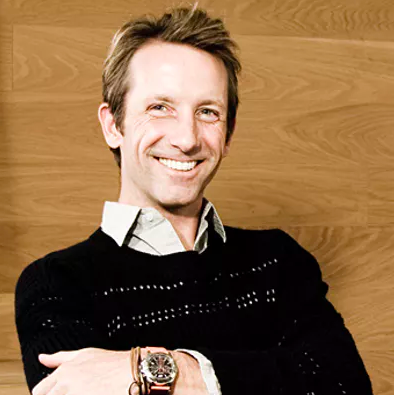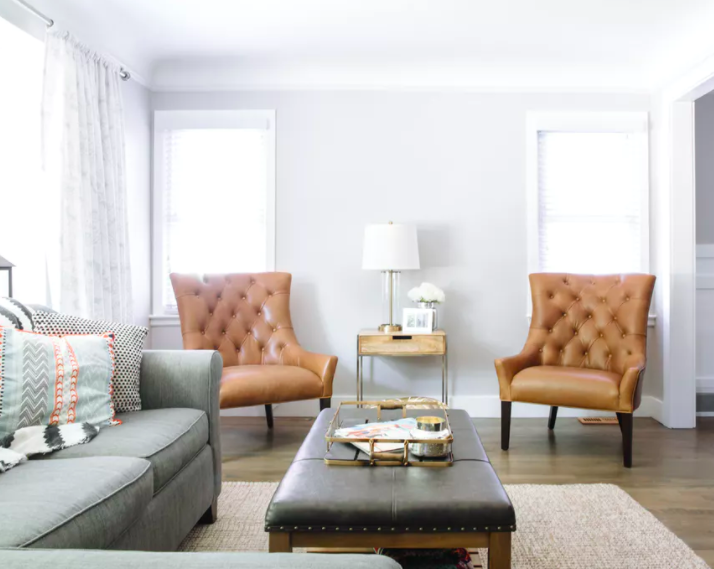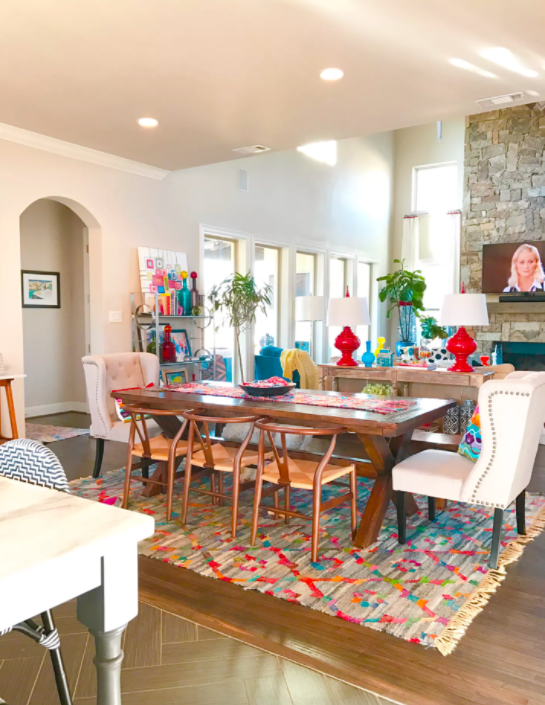What does Rudolph Steiner, the Austrian philosopher, social reformer, architect and creator of the Waldorf Method of education, have to do with Apartment Therapy?

Steiner’s method, which emphasizes the role of imagination in learning and strives to integrate, holistically, the intellectual, practical and artistic development of its students, suggests that the environment shapes not only the way we live but our success and happiness.
Maxwell Ryan, founder of Apartment Therapy, developed his own brand of therapy via Steiner’s teachings. Before founding Apartment Therapy, Ryan had intended to become a teacher, pursuing a master’s degree in English Literature at Columbia University. In the process, he discovered the Waldorf School on West 79th Street in New York. The school, he says, was different. “It felt right,” said Ryan. Eager to teach there, he trained in the Steiner method, learning two particular principles that would later inform his design philosophy.
The first posits that there are universal moments in childhood which unfold the same way at age 7, 12 or 16, regardless of whether the child is in New York, Moscow or beyond. If you know where they are, you can teach them what they need to know.
The second principle that Ryan embraced is that everything in a given environment is connected, including the color of the walls, the quality of the light, and where the sun shines. This became the central idea in Ryan’s own thesis on design. “This is interior design,” he says. “It supports development and happiness or it works against you.”

During the home visits, which were required as part of his training, Ryan learned that children who came from well-designed, organized and healthy homes were the happiest, most productive and performed best in school. It had nothing to do with the size of the apartment or the finances of its owners. The children who were the happiest and performed the best came from a clean, organized and healthy environment with minimal outside stimulus like televisions, an abundance of electronics, and most importantly, clutter.

"I was surprised to see how closely the home environments of my students lined up with their academic and social success in school," explained Ryan. "If the home was calm, clean and cared for, this seemed to directly lead to focus and attention to work in school, which led to success and higher confidence."
Lighting, he realized, is also important—well-lit spaces are conducive to happiness and performance. More subtle aspects, such as an orderly flow—so that even the child knows where things are located—are accretive. Additionally, structured dinner and bed times make all the difference.
Ryan began to wonder about a direct correlation between environment, happiness and performance. Could Steiner’s principles be implemented in, say, interior design? He synthesized everything he had learned from his Waldorf training to make his home a warm, comfortable and inspiring place.
Ryan shares “apartment therapy” principles: four levels to spatial happiness that are grounded in Steiner’s work:
1. Bones
2. Breathing
3. Heart
4. Head
BONES
Start with the bones of the room. Is the room truly clean? Is anything dirty or broken? Dirty windows or even a broken hinge can impact the overall sense of well-being.
Ryan calls this principle “the first check-in.” Addressing Bones is easy to accomplish yet exerts a strong impact. It is “the biggest bang for your emotional buck,” says Ryan. “It may not be conscious, but if you [create a] clean space with nothing broken or overlooked, you have gone a long way towards a harmonious interior.”
BREATHING
The flow of a room is also central to the happiness it brings. Are there odd spaces filled with excess? Is the closet full of junk? If the room isn’t flowing, it undercuts both happiness and success. Designers often apply little tricks, such as pulling a sofa away from the wall. Ryan cites “the work triangle of the kitchen: the stove, sink and refrigerator should be in triangular formation for the best flow. This will absolutely end in better meals.” If the flow is off, you will feel off.
HEART
Ryan points out, “The bones and breathing of a room could take place in black and white," or what he calls "the scaffolding" of a room. It’s the organizational level. The heart is what makes it our space our own and it is where decorating begins. Without the Bones and Breathing in place, a space is not ready for decor. The personal design journey starts with color choices. Ryan's overarching philosophy is that public rooms should have warm tones and that private spaces should have cool tones. (Warm tones support stimulation and cool rooms are conducive to focus.)
Color also translates into texture and materials. This is an important part of the heart of the home. Steiner felt that bringing in nature was very important. The shape and form of the objects in a space impact how its inhabitants feel. Most overly rational Western architecture has traditionally been based on straight lines, but the most compelling and healthy interiors have a combination of straight and curved.
HEAD
Ryan says that Steiner used the human form to illustrate many of his guiding principals. The head is the crown, or our highest aspirations, for our interiors. The choices we make in art, for example, come from the head. They are not choices based on decoration. The art we choose is often representative of our hopes and dreams. We may also express the head of the home with personal tributes such as an altar, or groupings of family photographs.
Ryan ultimately left teaching to start a one-man design service that applied Steiner’s teachings, home by home. His clients received organized, healthy, personal and happy homes, and through the design work and the questions asked by Ryan’s clients, he found the genesis for his blog. Apartment Therapy has since grown into the largest independent home and cooking media digital platform, all thanks to the fundamental idea that our environments shape our happiness and productivity.




























